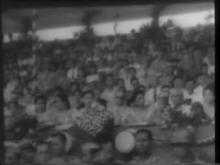Republic Day (Philippines)
| Philippine Republic Day | |
|---|---|
 The Flag of the United States is lowered while the Flag of the Philippines is raised during independence ceremonies, July 4, 1946 | |
| Also called | Filipino American Friendship Day |
| Observed by | Philippines |
| Type | Secular, heritage, governmental |
| Significance |
Initially, celebration of the establishment of the Republic of the Philippines on July 4, 1946 |
| Date | July 4 |
| Next time | 4 July 2015 |
| Frequency | annual |
Philippine Republic Day, July 4, also known as Filipino-American Friendship Day,[1] is a day in the Philippines formerly designated to commemorate the official recognition of Philippine independence by the United States of America.[2]
Background
The Philippines was a U.S. territory from 1898 to 1946. Between 1941 and 1945, Japan occupied the territory during World War II, it remained a U.S. territory with a government in exile headed by Manuel Quezon initially located in Australia and later in the United States. A campaign to retake the country began in October 1944, when General Douglas MacArthur landed in Leyte along with Sergio Osmeña who had assumed the Philippine presidency after Quezon's death. The battles entailed long fierce fighting; some of the Japanese continued to fight until the official surrender of the Empire of Japan on September 2, 1945. The country gained complete independence on July 4, 1946.[3]
Observation

Initially, the nation's Independence Day holiday (Araw ng Kalayaan) was held on July 4. Former President Diosdado Macapagal moved it to June 12, the date on which the Malolos Republic had declared independence from Spain in 1898. Philippine Republic Day was created in its place,[4] coinciding with the United States's Independence Day on July 4.
In 1955, President Ramon Magsaysay issued Presidential Proclamation No. 212, s. 1955, which established the observance of Philippine American Day every November 15, the anniversary of the inauguration of the Commonwealth of the Philippines.[2][5] Sometime during the administration of President Ferdinand Marcos, Philippine–American Day was renamed Philippine–American Friendship Day and moved to July 4, overshadowing the observance of the date as Philippine Republic Day. After the Third Republic and the 1935 Constitution were discarded by Martial Law, it was impolitic to remind the public of the old republic. This is why, when President Marcos issued Presidential Proclamation No. 2346 s. 1984, reference was made to Philippine–American Friendship Day, which was relegated to a working holiday without mention of Philippine Republic Day.[2]
Delisting
During the administration of President Corazon C. Aquino, the practice of celebrating Philippine–American Friendship Day and Philippine Republic Day as a non-working holiday was formally abolished. Section 26 of the Administrative Code of 1987 specified a list of regular holidays and nationwide special days that did not include July 4.[6]
See also
- Araw ng Kalayaan (Day of Independence)
- Public holidays in the Philippines
- Bell Trade Act
- U.S. Naval Base Subic Bay
- Clark Air Base
- RP–US Visiting Forces Agreement
- Philippine-American Friendship Day Parade
References
- ↑ Delmendo, Sharon (2005). The Star-entangled Banner: One Hundred Years of America in the Philippines. UP Press. p. 132. ISBN 9789715424844. Retrieved 29 August 2014.
Hunter, Duncan (12 June 1991). "Filipino Independence Day". Congressional Record, Volume 132. Government Printing Office. p. 14634. Retrieved 29 August 2014.
Slater, Judith J. (2004). Teen Life in Asia. Greenwood Publishing Grou. p. 185. ISBN 9780313315329. Retrieved 29 August 2014. - ↑ 2.0 2.1 2.2 Philippine Republic Day, Official Gazette (Philippines), retrieved 2012-07-05
- ↑ TREATY OF GENERAL RELATIONS BETWEEN THE UNITED STATES OF AMERICA AND THE REPUBLIC OF THE PHILIPPINES. SIGNED AT MANILA, ON 4 JULY 1946 (pdf), United Nations, retrieved 2007-12-10.
- ↑ Fisher, Max (2012). "The One Other Country That Celebrates the Fourth of July (Sort of)". The Atlantic (THE ATLANTIC MONTHLY GROUP). Retrieved 4 July 2012.
Macapagal kept July 4 as a national holiday, though: Philippine Republic Day, which is still on the books but scantly observed. It is sometimes referred to as Filipino-American Friendship Day. Despite the colonial history, relations between the one-time colony and master are still good; many Filipinos remember how hard the U.S. fought to end Japanese occupation.
- ↑ "PROCLAMATION NO. 212". Government of the Philippines. November 4, 1955.
- ↑ "Administrative Code of 1987". Chan Robles Law Library. July 25, 1987.